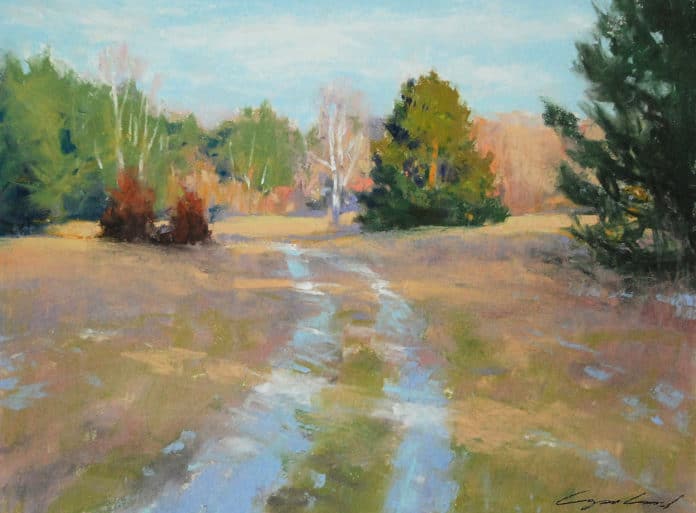By Christopher Copeland
Often when plein air painting I return to a location I have previously been. This particular series of work entitled “Snow Trails” is of a nature park I visited during the past two winter seasons. With the occurrence of shifting light and shadows, melting snow, and exposed ground color, my purpose in each was to record the subtle nuances of edge, light, and color.
From this vantage point the elements of shapes and form, shadows, the trees, and path develop a structure of value shapes, composing and editing these shapes into a unified whole. By focusing on these elements and the light source, I then look to achieve a balanced harmony in my color choices.
Oil paint is my preferred choice, for its rich coloring and control. But frequently I use pastels to make a quick sketch of nature, favoring the soft medium to capture nature in its fleeting light.
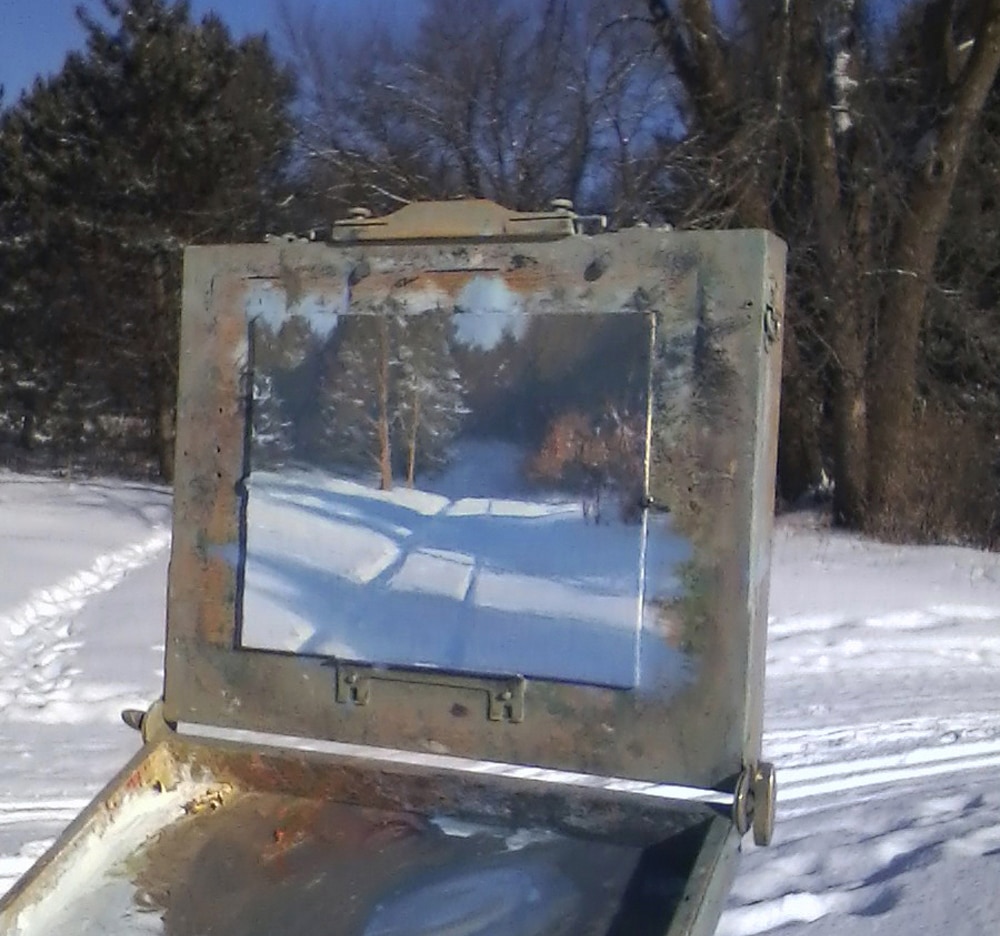
When working with painting students outdoors, I stress that with keen observation and awareness, we can identify opportunities for a successful painting. Upon making their composition, I suggest to simplify the scene into large masses, developing a pattern of light and shadow shapes that link the painting together. Mass in these shapes thinly, working within these shapes applying thicker passages toward the highlights. Squinting always, move your eye around, constantly comparing and judging color and value, cool to warm, dark to light. Without implying too much detail, an impression of nature is what we are after.
Doing the snow trail paintings in successive fashion recalled to me the work of Claude Monet, where the painter documented a single subject over the course of a season. By approaching his subject at various times, the underlying theme may be seen as the transience of light. For my inspiration to paint, there is no substitute for nature; it provides subject matter, light, atmosphere, and the harmonious color tone I look for.
By being familiar with a landscape, I find that I develop an intimate understanding and emotional connection to the subject. With prolonged consciousness to nature, my intent is to convey that expression in the paintings. Not elaborate or complicated, these landscapes reveal a place in time, unencumbered from fanciful design. I find the significance in these places is the simplicity and enduring emotional content.
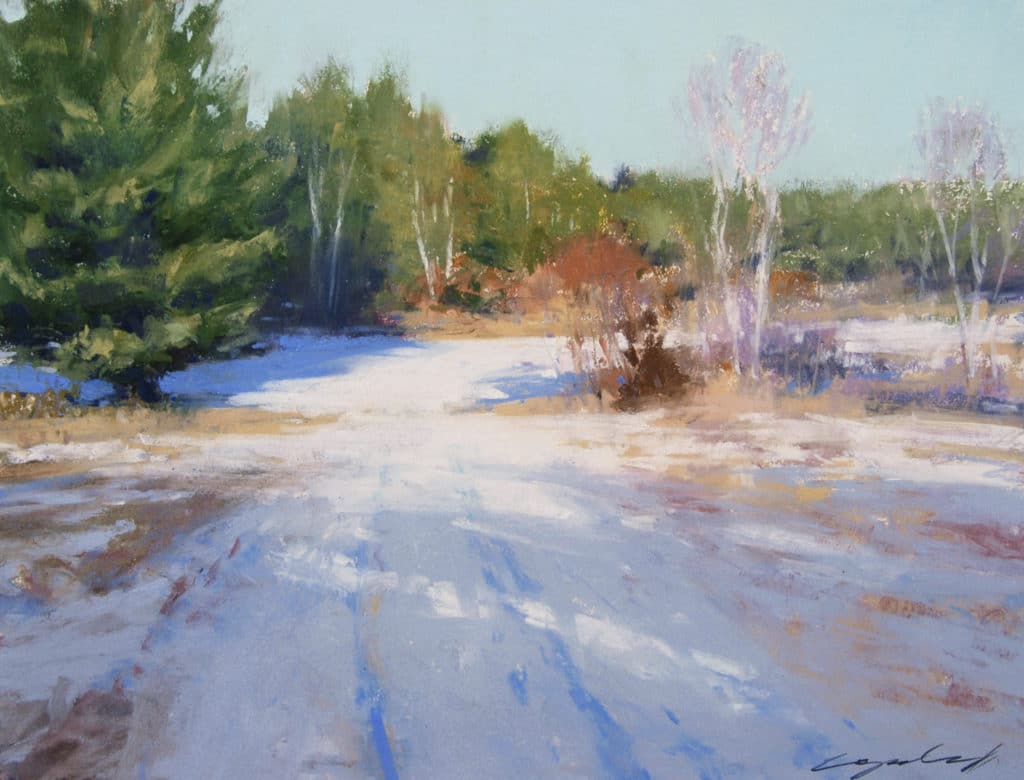
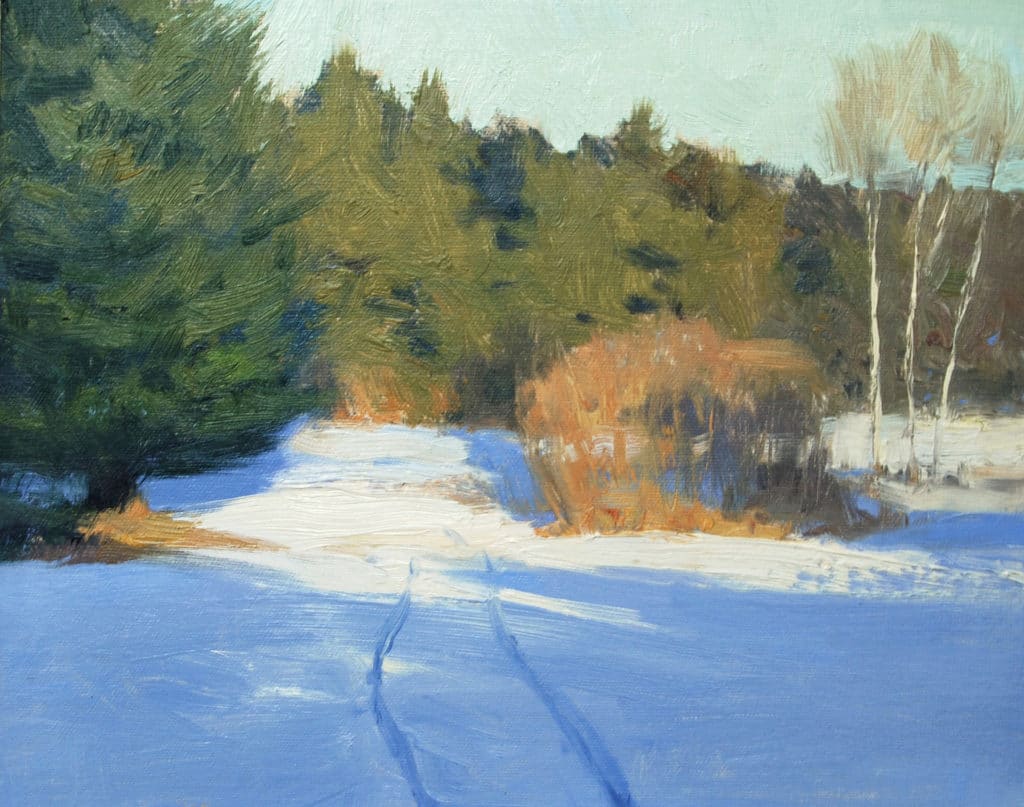
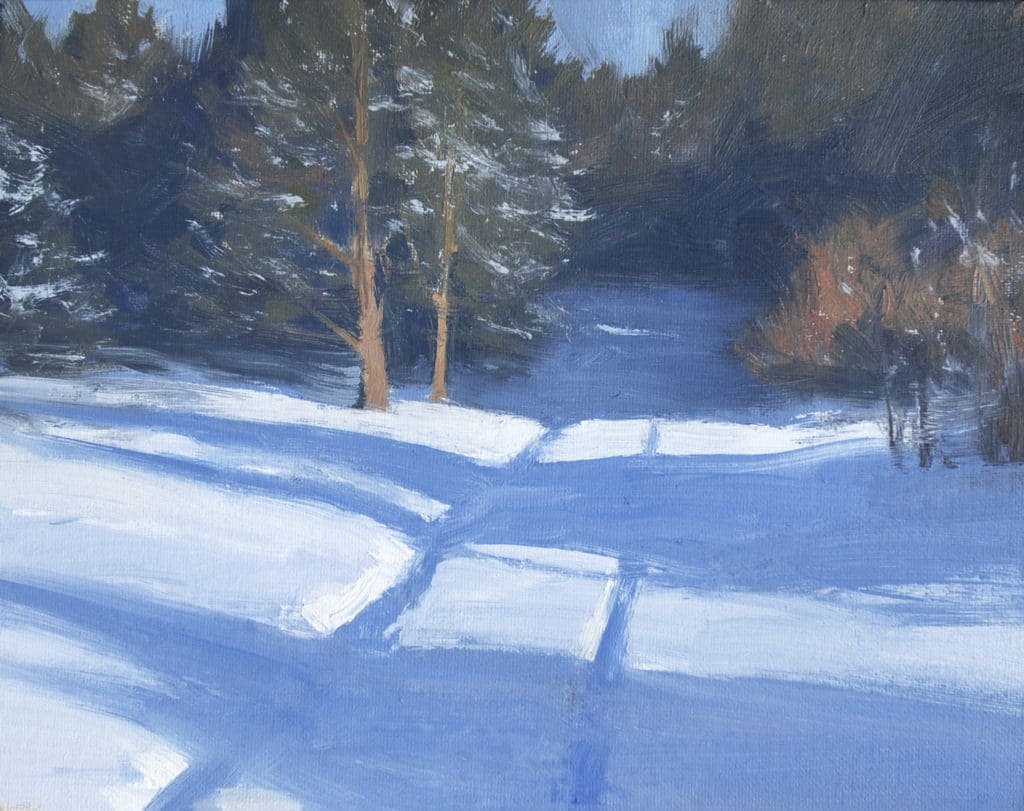
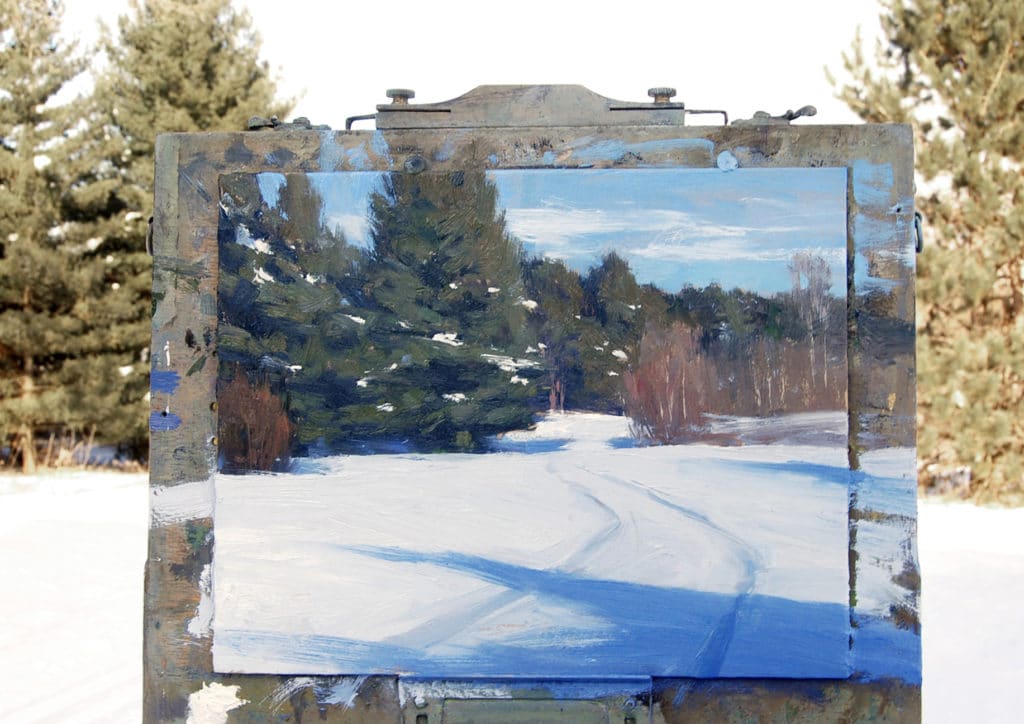
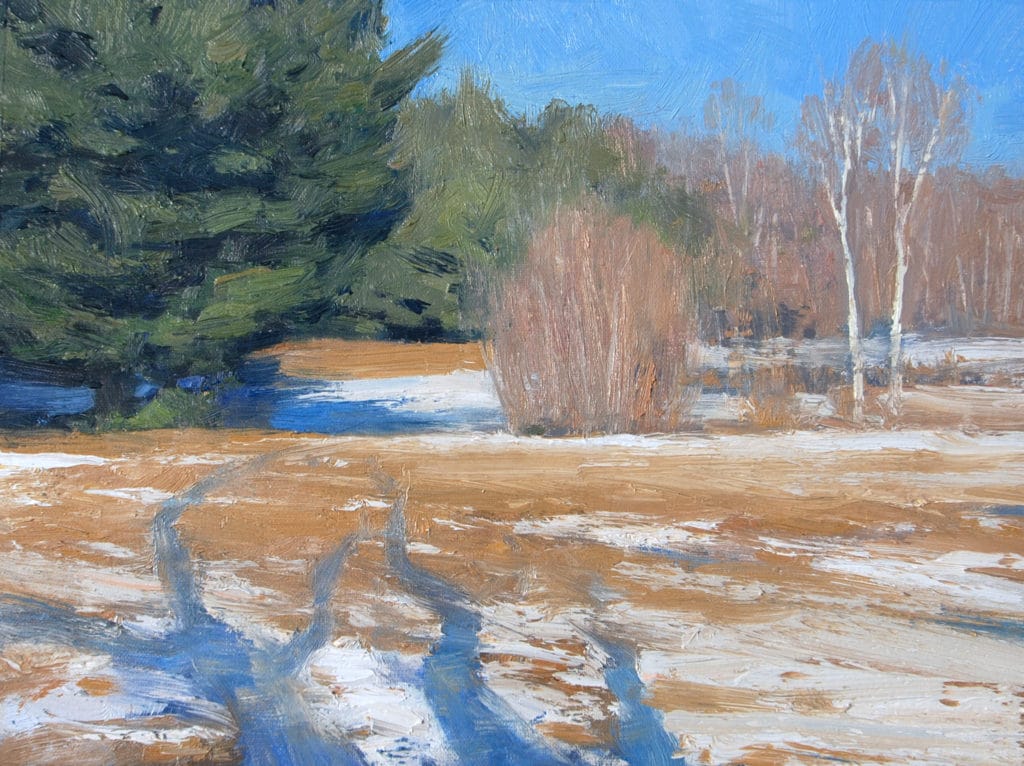
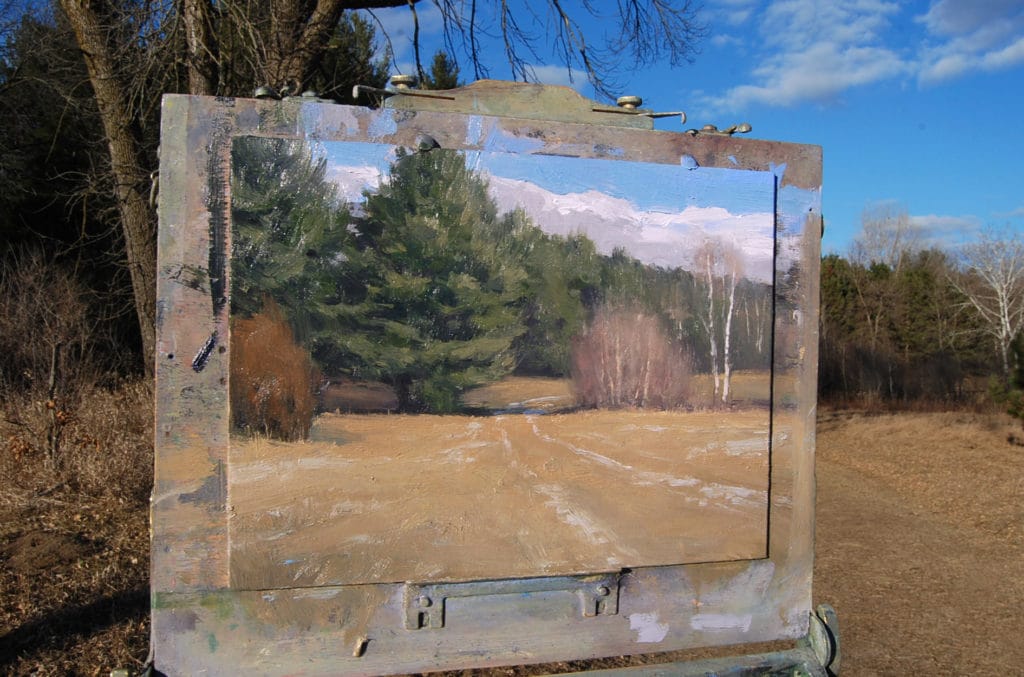
www.christophercopeland.com | Instagram

